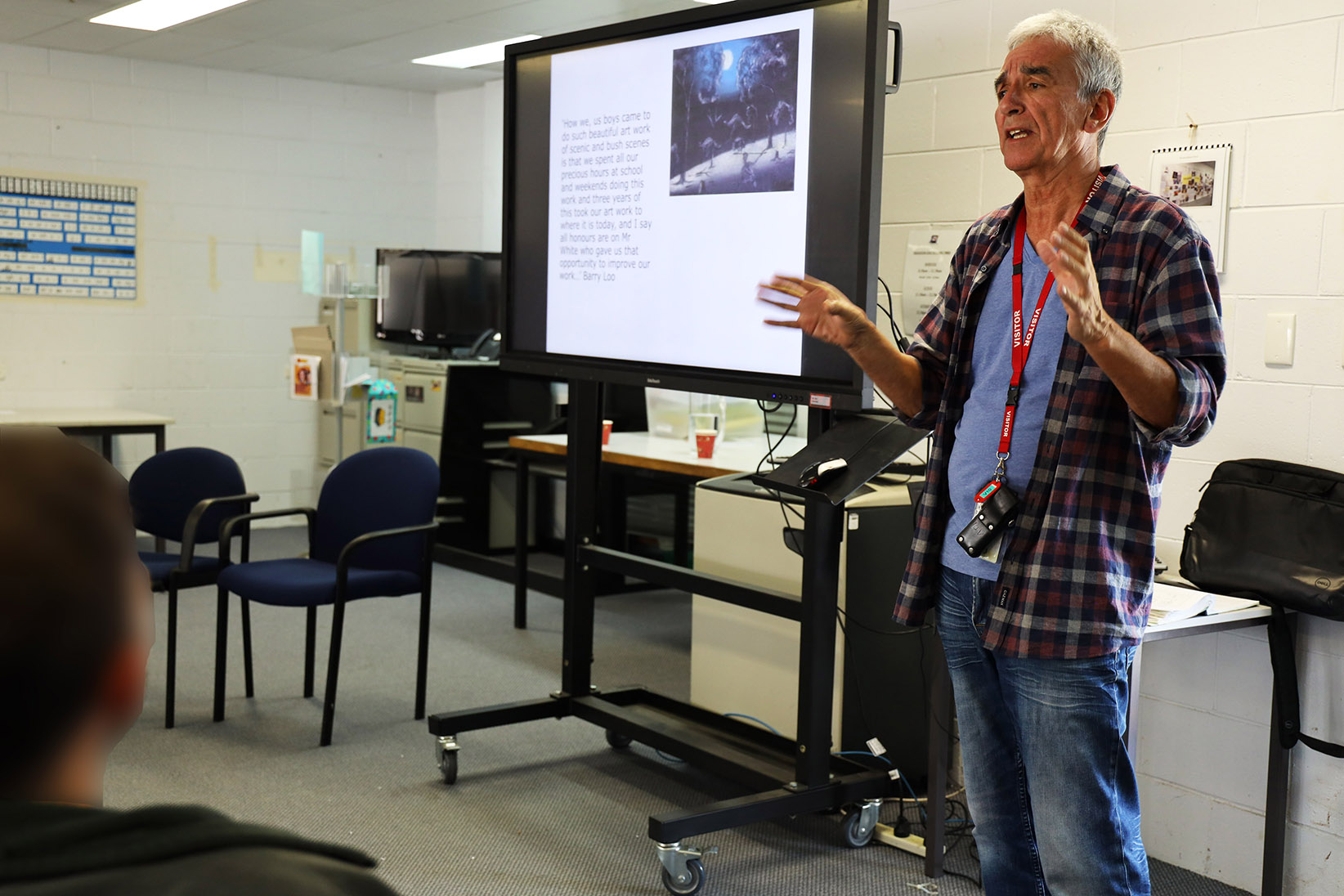
The Stolen Generation children of the Carrolup Native Settlement in the Great Southern in the late 1940s created paintings which stunned outsiders and were exhibited overseas.
A large collection of the paintings were dramatically rediscovered in the United States more than 50 years later and eventually brought back to Country in WA.
The students at Casuarina – a maximum security men’s prison south of Perth - have undertaken workshops in the Carrolup style and were given a presentation by two academics who have researched the child artists.
University of WA Professor John Stanton and Professor Emeritus David Clark (pictured) gave the prisoners and Casuarina education staff some insights into the history and legacy of the Carrolup children.
“It’s a story of connection to culture and Country,” Professor Clark said.
“The presentation gives people the opportunity to think about who they are and where they belong,” he said. “Art helps people to express what they can’t find the words to express.”
Some of the prisoners in the audience seemed to visibly grow in pride – sitting taller in their seats and smiling – as they listened to the story of the child artists.
The story of the Carrolup children’s art began when Noel and Lily White took over as educators at the settlement in 1946.
Noel White made the accidental discovery that the best way to communicate with the children was through art. Although he wasn't an artist, he took them for walks in the bush and encouraged them to draw what they saw.
Without training and only basic materials, the children produced striking images of bushland, wildlife and Aboriginal hunting and ceremonies.
In 1947 the children's art attracted public attention through exhibitions at the Katanning Show and the Lord Forrest Centenary Exhibition in Perth.
English philanthropist Florence Rutter visited Carrolup and brought artworks to Europe for exhibition and sale.
Remaining works in her collection were sold to New York art collector Herbert Mayer, who donated them to Colgate University in the 1960s. They were rediscovered in storage in 2004 and brought home to Country in 2013.
The paintings are on display at Curtin University’s John Curtin Gallery.
The Carrolup school had closed in 1950 along with the entire settlement the following year. When Noel White became headmaster of the Fremantle Prison school in 1961 he discovered some of the child artists he had mentored were prisoners there.
One of them, Revel Cooper, produced works which influenced a generation of Aboriginal artists.
The Carrolup artists' legacy continues at Casuarina. Along with producing breathtaking art and decorated emu eggs, one of the prisoners has painted a series of flora and flora signs complete with their Noongar names for each of the education centre's classrooms.
"People who are inside are traumatised and have no feeling of self-worth. Art has healing properties," Professor Stanton said.
"Prisoners who paint landscapes assert their link to Country and work through issues in a non-confrontational way."


